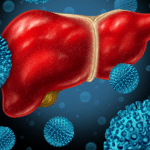
[Disclaimer: I am an employee of Celgene. The views reported here are my own.]
Drug research and development (R&D) is a slow, arduous process. As readers of this blog know, it takes >10 years and upwards of $2.5 billion dollars to bring new therapies to patients in need. An aspiration of the biopharmaceutical ecosystem is to shorten cycle times and increase probability of success, thereby dramatically improving the efficiency of R&D.
One potential solution is to use human genetics to pick targets, understand molecular mechanism, select pharmacodynamics biomarkers, and identify patients most likely to respond to treatment (see Science Translational Medicine article here). While intuitively appealing and supported by retrospective analyses (here), it is not yet routinely implemented in most R&D organizations (although see Amgen blog here; Regeneron study below). Indeed, human genetics often represents an inconvenient path to a new therapeutic, as it takes substantial effort to understand the molecular mechanism responsible for genetic risk and many such targets are difficult to drug.
But what if…
…it were possible to go from gene variant to therapeutic hypothesis instantly via in silico analysis;
…it were possible to select an “off-the shelf” therapeutic molecule that recapitulates a human genetic mutation, and take this molecule into humans almost immediately, with limited pre-clinical testing;
…it were possible to select pharmacodynamics (PD) biomarkers that capture underlying human physiology, and to measure those PD biomarkers in a small, human proof-of-mechanism clinical trial;
…it were possible to model the magnitude of effect of a therapeutic intervention relative to existing standard-of-care, and thereby to estimate the commercial market of an as-yet-to-be-approved drug?…

